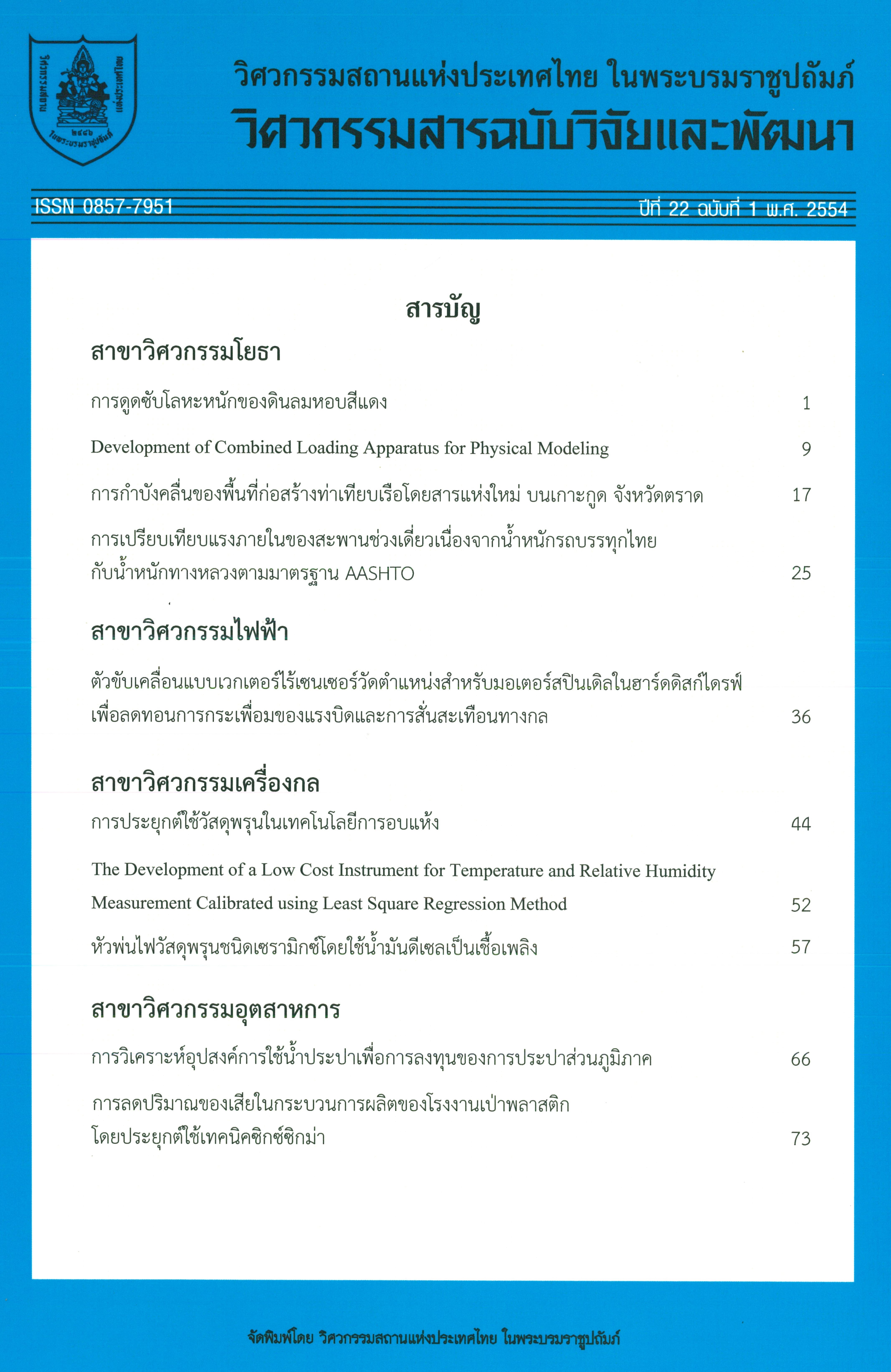หัวพ่นไฟวัสดุพรุนชนิดเซรามิกซ์โดยใช้น้ำมันดีเซลเป็นเชื้อเพลิง
Main Article Content
Abstract
The combustion of diesel oil in the ceramic porous burner was examined to investigate evaporation mechanism and combustion behavior. The honeycomb ceramic porous material was made of Silicon Carbide (SiC) having 96 mm in diameter and 10 mm thick. Ten ceramic plates were stacked together to form a porous burner. Two porosities (e), i.e., 0.15 and 0.22, were studied. The fuel was supplied dropwise from the top through the porous burner and evaporated within the porous media followed by the combustion on the bottom side. Axial profiles of temperature along the burner length were measured. The pollutant emission characteristics were also monitored at the burner exit. From experimental study, conduction mode of heat transfer was more significantly than radiation one for the evaporation within ceramic porous media. The stable flame of e = 0.15 was turbulently achieved by occurring almost throughout the cross section area of the inner burner resulting in the temperature profile was wider than that the case for e = 0.22. A triangular shape of the temperature profile was changed as trapezoidal shape with fuel input load (QF) and decreasing in flow rate of swirling air (QA). The level of CO and NOX depended strongly on QF and e; the observed level of them were acceptable range.
Article Details
The published articles are copyright of the Engineering Journal of Research and Development, The Engineering Institute of Thailand Under H.M. The King's Patronage (EIT).

